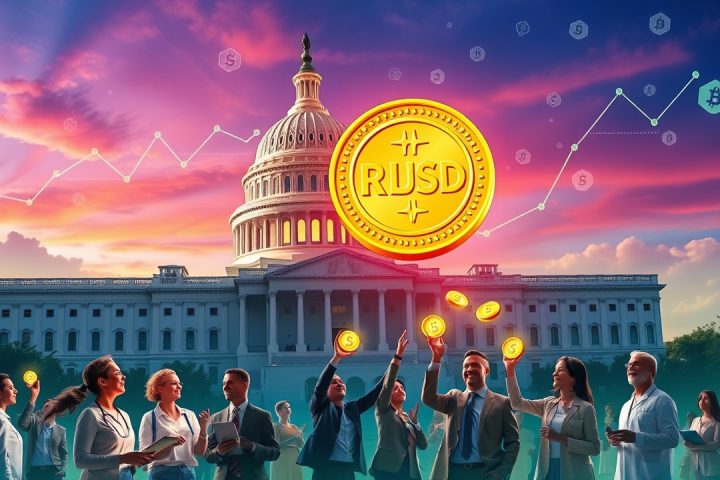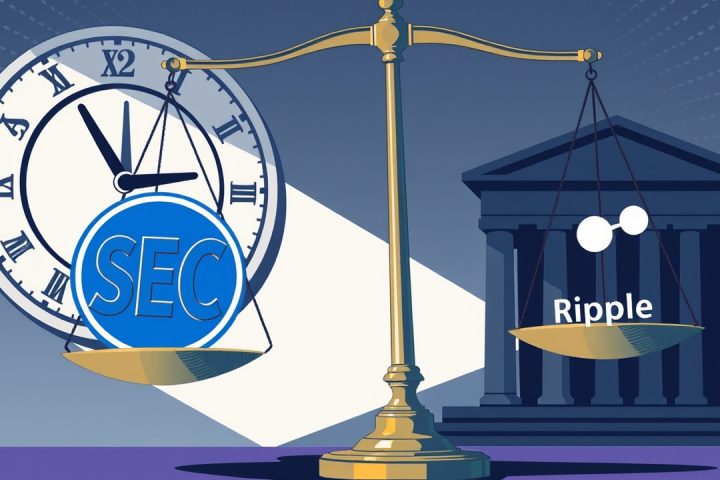Introduction to XRP Futures Contracts
Recent movements in the cryptocurrency arena have spotlighted Coinbase Derivatives, which has now added XRP futures contracts to its US derivatives trading platform. This initiative aligns with a significant trend toward regulated exchanges enhancing their futures trading offerings, consequently providing investors with new avenues to interact with digital assets like XRP.
What does the introduction of XRP futures entail? Let’s unpack this further.
Understanding XRP Futures
To clarify, XRP futures are formalized contracts that enable parties to commit to the purchase or sale of XRP at a predetermined price on a defined future date. This means that, rather than dealing with the actual cryptocurrency, traders are speculating on the contract that mirrors the price of XRP. The US Commodity Futures Trading Commission (CFTC) oversees these contracts, reinforcing an added layer of regulation, which many investors find reassuring, particularly given the risks associated with unregulated trading environments.
Coinbase officially launched these XRP futures contracts after filing for self-certification with the CFTC on April 3, 2025, and began trading them on April 21, 2025.
Overview of XRP Futures Contracts on Coinbase
Coinbase’s offerings include two types of futures contracts:
- Nano XRP Futures: Each contract involves 500 XRP and is cash-settled in US dollars. These are tailored for retail investors and smaller institutions, requiring lower capital while still allowing exposure to XRP’s price dynamics.
- Standard XRP Futures: These cater to larger institutions and seasoned traders, encompassing contracts of 10,000 XRP, also settled in USD.
These options provide traders the flexibility to select contract sizes that align with their risk appetite and investment strategies. However, what does cash settlement really entail? In both types of contracts, you’re not buying or receiving XRP directly. Instead, you engage in trading contracts that reflect XRP’s value, and profits or losses based on the price difference at the time of closing the contract are settled in USD.
Advantages of Trading XRP Futures
Many might question the preference for trading futures instead of directly purchasing XRP on exchanges. Here are some compelling reasons:
- Leverage: Futures contracts enable traders to control significant positions with a minimal upfront investment. While this can amplify profits, it equally raises the stakes for losses.
- Hedging Opportunities: Investors holding XRP can use futures to safeguard against short-term price fluctuations.
- Speculative Flexibility: Futures enable both long (buying) and short (selling) strategies, allowing profit-taking in both rising and falling markets.
- Elimination of Storage Concerns: Acquiring XRP necessitates managing a secure wallet and safeguarding private keys, which carries inherent risks. Futures contracts are pure financial instruments, which sidestep these custody issues.
- Enhanced Liquidity: Futures markets can be notably liquid, making it easier to enter and exit positions quickly.
- Simplicity of Cash Settlements: The cash settlement mechanism allows traders to realize gains or losses in fiat currencies without dealing with XRP directly, significantly easing the trading process for those wary of asset custody.
When to Choose Futures Contracts vs. Buying XRP
- Consider futures when you desire to actively trade XRP price movements with leverage or if you want the flexibility to both go long and short.
- Buy XRP if you believe in its long-term growth potential, intend to utilize it for transactions, or want to steer clear of leverage risks associated with futures trading.
Ultimately, traders seeking tactical and leveraged exposure may find futures to be appropriate, whereas long-term holders and transactional users might gravitate towards directly purchasing XRP. Rigorous risk assessment is fundamental before engaging in investing activities surrounding XRP or its futures.
Platforms for Trading XRP Futures
For those interested in trading XRP futures, a variety of platforms exist alongside Coinbase that cater to diverse trading needs:
- Kraken Futures: Offers leveraged XRP futures, although limited to wholesale clients or professional clients in certain jurisdictions.
- Binance: Features perpetual futures contracts for XRP/USDT with leverage, although recent changes have restricted XRP as a margin asset.
- OKX: Provides perpetual swaps for XRP to facilitate continuous trading, with supportive leverage options.
- Bitget: A globally accessible platform offering user-friendly XRP futures trading with long or short positions.
- KuCoin Futures: Offers XRP perpetual contracts with a focus on low trading fees and flexibility.
- MEXC: Features both USDt-margined and coin-margined XRP futures catering to a wide audience.
- Delta Exchange: Offers high-leverage XRP perpetual futures while ensuring competitive fees.
- Bitfinex: Complements its extensive derivatives offerings with XRP futures while requiring regional eligibility.
Steps to Begin Trading XRP Futures
- Select a platform: Start with a regulated exchange such as Coinbase’s US Derivatives Exchange, register, and undergo identity verification.
- Learn about the product: Familiarize yourself with contract sizes, margin requirements, and associated risks, recognizing the inherent complexities of futures trading.
- Fund your account: Deposit requisite funds to act as collateral for your trades, ensuring awareness of minimum deposit and margin requirements.
- Initiate your trade: Utilize the trading interface to choose your desired XRP futures contracts, determine your position, and set leverage if applicable.
- Implement risk management: Given the volatile nature of futures, it’s prudent to set stop-loss orders and limit position sizes according to your risk tolerance.
- Monitor the market conditions: Keep tabs on XRP’s pricing and related external factors influencing the market to make informed trading decisions.
Understanding Risks Associated with Crypto Futures
Engaging in futures trading opens potential opportunities but is fraught with risks, especially for newcomers. Key points to consider include:
- Leverage Risk: While it can heighten potential returns, leverage can also exacerbate losses, and minor adverse movements can substantially impact your investment.
- Market Volatility: XRP is notorious for its erratic price fluctuations, which can heavily influence futures trading outcomes.
- Liquidation Risk: If the market shifts against your position and your margin requirement is unmet, your contract may be liquidated at a loss.
- Complexity of Futures: Futures are inherently more complex than basic spot trading, requiring a solid understanding of contract specifics.
- Market Liquidity Dynamics: Active participation is crucial for successful trading as thin order books can provoke unexpected price changes.
- Emotional Strain: The fast-paced environment of futures trading can lead to impulsive decisions, necessitating discipline and strategic foresight.
For those new to this arena, starting with demo accounts or opting for nano contracts to minimize exposure during the learning curve could be wise.
Conclusion
In related news, the state of Oregon is taking legal action against Coinbase, alleging the offering of unregistered securities, including XRP. This lawsuit emerges amid a pause in broader federal enforcement on similar issues, highlighting an increasing state-level initiative to regulate the digital asset landscape. The outcome of this case may not only impact Coinbase but could also shape future regulatory approaches within the crypto sector.




